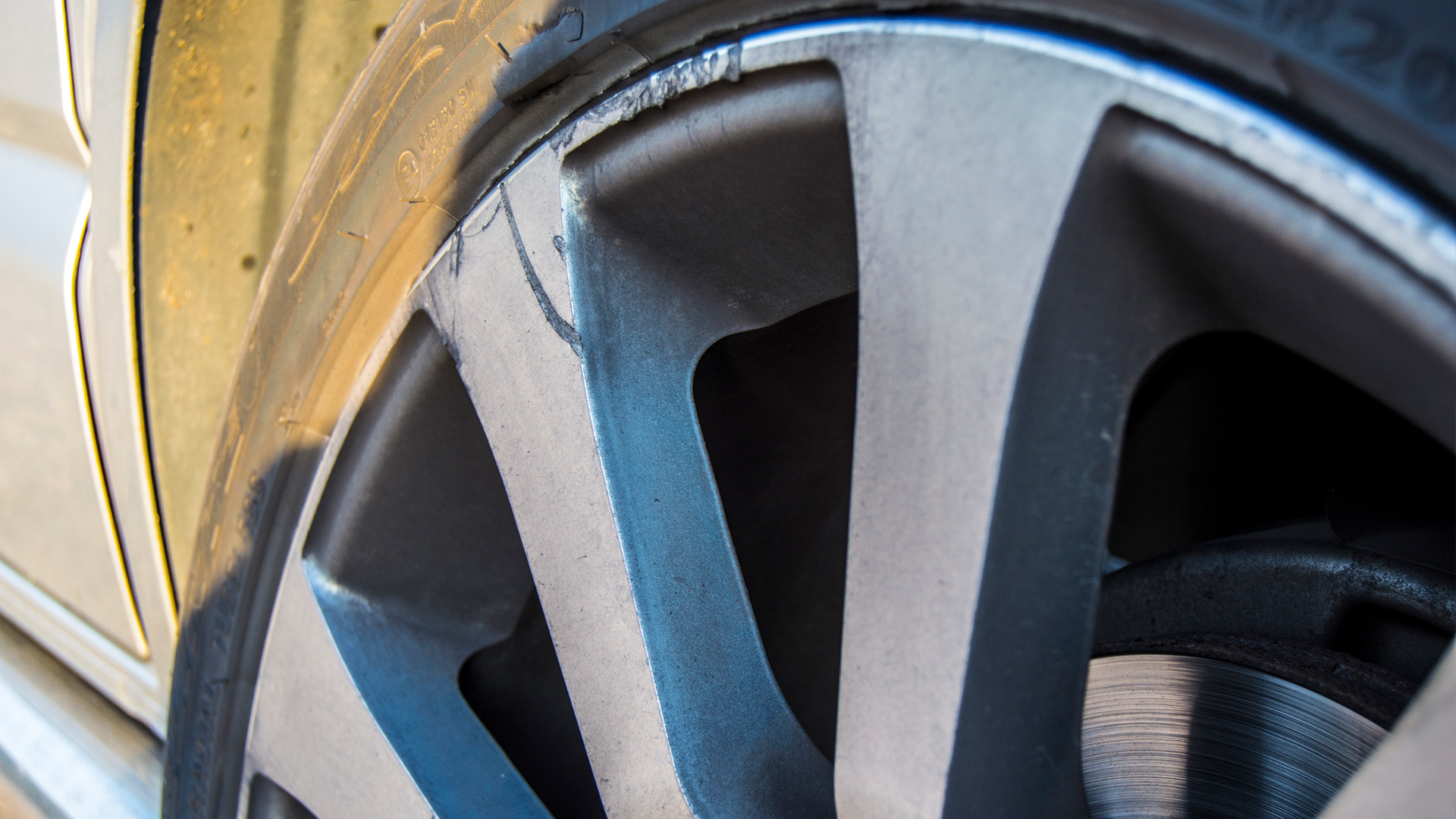Damaged alloy wheels have a big impact on the overall look of your vehicle. Without perfect shiny wheels, there’s the danger that your vehicle won’t be as eye catching as you’d hoped.
There are also potential safety concerns which come with alloy wheel damage. These concerns usually depend on the extent and severity of the damage, but sometimes it can be hard to spot the warning signs, especially to the untrained eye.
On top of this, damaged alloys can harm the resale value of your vehicle quite drastically; individuals or garages looking to buy your vehicle, normally won’t want to have to get the alloys repaired after buying, so they won’t spend anywhere near as much if your alloys aren’t in top condition.
So we know that alloy wheel damage can lead to impacted visual appeal, possible safety issues, and reduced resale value. Now, let’s look at how we can spot alloy damage.
Types of alloy wheel damage
Alloy wheel damage is quite a broad term, and there are actually a lot of ways in which alloy wheels can become damaged:
Book an Alloy Wheel Repair Today
Is alloy wheel damage dangerous?
Alloy wheel damage can be very dangerous. Accidents caused as a result of tyre blowout or even handling issues can be catastrophic. We’d always recommend getting alloy damage looked at by a professional as soon as possible. This will increase safety on the road and reduce the risk of a minor issue becoming a major one, saving you money down the line too.
Some forms of damage, such as buckled alloys, can compromise steering and suspension. It’s just one of those things that isn’t worth the risk!

Causes of alloy wheel damage
There are a few main causes of alloy wheel damage. Although we touched on this earlier, it’s important to properly understand the causes, so you can aim to avoid some factors where possible.
One common cause is simply through impact and contact with kerbs and other cars. Whether it’s from a minor accident, or scraping your alloys against a kerb, a number of wheel related damage can be put down to this.
Another is potholes and speed bumps, which can lead to intense amounts of pressure localised around the wheels, which tests the integrity of even the strongest alloys. We’d recommend avoiding potholes where possible, and driving very slowly over speed bumps, or uneven surfaces.
A lesser known cause of alloy damage is incorrect tyre pressure. Whether the pressure is too high or too low, having the wrong amount of pressure in your tyres can place additional strain on your wheels and, in some cases, lead to damage.
5 signs of alloy wheel damage
You can’t get your alloys repaired if you don’t even know they’re damaged, and sometimes with our busy lives, we miss obvious signs of damage. Equally, alloy damage isn’t always visible at a glance, so here are 5 key signs of alloy wheel damage:
Loss in tyre pressure - Whilst often down to an issue with the tyres themselves, many people don’t realise that repeated tyre pressure problems can actually be as a result of damaged alloy wheels. A damaged wheel could be putting additional strain on your tyres, causing them to leak air.
Handling issues - Difficulty or increased resistance when steering might be a result of wheel damage. Your wheels might be out of balance or alignment as a result of damage, meaning they’re due a repair.
Steering wheel vibration - A common sign of wheel damage, especially when driving at higher speeds. Damage may have caused wheel misalignment, which is what usually leads to this problem.
Visible damage - Even if you can't see it at a glance, some damage might be noticeable upon a more thorough inspection. Be sure to check around the rims of the alloys, as this is where most damage occurs.
Lowered fuel efficiency - Damaged wheels can mean that your engine has to work harder to compensate for lesser performance. If you notice that you’re refuelling more than usual, it might be because of alloy damage.
If you’re noticing one or more of these common alloy wheel damage indicators, we’d recommend booking an repair as soon as possible. Choose Alloy Wheel Repair Services for reliable results at competitive prices.
Find your Nearest Alloy Wheel Refurbishment Centre
